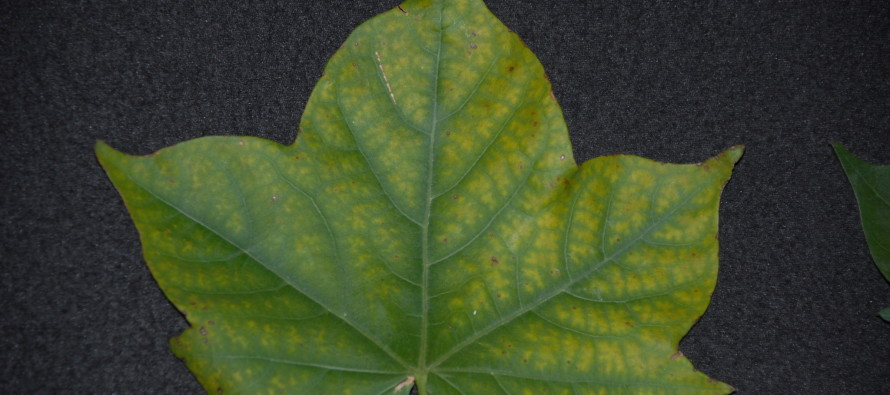Potassium Deficiency in Cotton

Related Articles
- Fertilizing Cotton with Poultry Litter 5
- Spring Nitrogen Fertility Suggestions for Wheat 0
- Micronutrients for Mississippi Crop Production 4
Latest Tweets
Over the past several weeks blooms have become commonplace in most Mississippi cotton fields. Many of these fields were blooming at or just after the 4th of July. Once cotton begins to square and more so once bloom begins, nutrient demands tend to shift dramatically. This is particularly true for nitrogen and potassium. As such, several calls have came in over the past couple of weeks regarding the appearance of nutrient deficiencies in cotton, particularly potassium. Prior to peak bloom, potassium deficiency in cotton presents itself as interveinal chlorosis on older leaves. These areas of interveinal chlorosis can progress to a red/gold color on these leaves followed by necrosis and/or the onset of foliar disease symptoms.

After peak bloom (~3-4 weeks after first bloom), similar deficiency symptoms will appear on the plant; however, they tend to appear on newer leaves in the upper one-third of the plant. This is due to the fact that developing bolls are a strong sink for potassium. In addition to the symptoms previously described, leaves can start to curl downward and become thicker. If the deficiency is severe enough, the cotton plant can begin to defoliate itself. This discoloration and defoliation is sometimes attributed to Verticillium wilt; however, to differentiate between the two, cut the lower portion of the stalk and examine stem tissue for discoloration. If the material in the stem is bright white in color and no discoloration is present, this issue is most likely due to nutrient deficiency. If discoloration is present in the vascular tissue, the plant may in fact be suffering from Verticillium wilt.
If you suspect your cotton is displaying symptoms of potassium deficiency it is important to determine why this is occurring. If your plant has a strong root system and adequate soil moisture is available, the issue may be a supply/demand issue. Your soil may have adequate levels of potassium; however, the plant may be demanding more potassium than it can take up in a timely manner. If your plants have a poorly developed root system and/or soil moisture is lacking, the potassium may be present in the soil but the plant is unable to remove it from the soil and utilize it in a timely manner. Finally, your soil may be truly deficient in potassium and thus your plants are deficient in potassium.
More times than not, foliar feeding is not a cost effective option for supplying additional potassium to cotton plants. In many cases, 5 pounds or less of actual potassium is being delivered in a single foliar application. In addition, just because you may be applying 5 pounds of potassium, not all of this amount is intercepted and/or taken up by the cotton plant. Given that cotton can take up 3-4 pounds of potassium per day during peak bloom, even if the plant takes up all 5 pounds being applied, this amount is sufficient to supply plant needs for a little over one day. The most cost effective way to ensure adequate potassium nutrition in cotton is to soil sample every 2-3 years and apply potash based on soil test recommendations while keeping the amount of potassium removed through harvest activities in mind. In addition, do everything possible to ensure that your cotton plants have a strong root system which includes: maintaining adequate pH levels, alleviating hardpans, proper drainage which will help prevent shallow rooting, etc.









Let me tell You a sad story ! There are no comments yet, but You can be first one to comment this article.
Write a comment